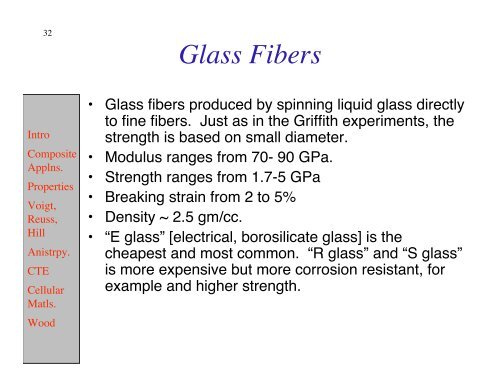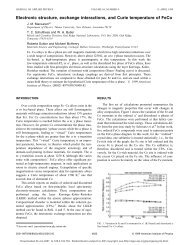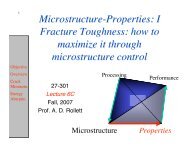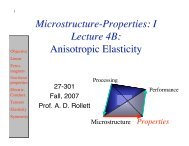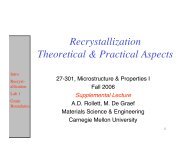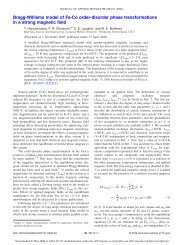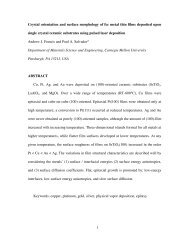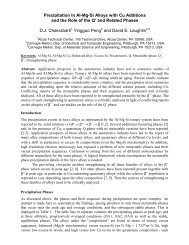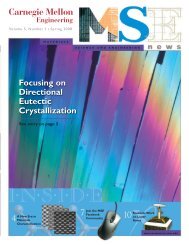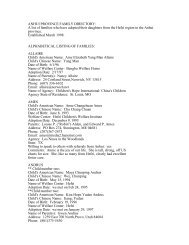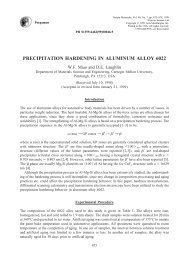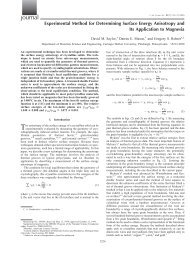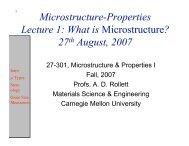L7 composites - Materials Science and Engineering
L7 composites - Materials Science and Engineering
L7 composites - Materials Science and Engineering
You also want an ePaper? Increase the reach of your titles
YUMPU automatically turns print PDFs into web optimized ePapers that Google loves.
32<br />
Intro<br />
Composite<br />
Applns.<br />
Properties<br />
Voigt,<br />
Reuss,<br />
Hill<br />
Anistrpy.<br />
CTE<br />
Cellular<br />
Matls.<br />
Wood<br />
Glass Fibers<br />
• Glass fibers produced by spinning liquid glass directly<br />
to fine fibers. Just as in the Griffith experiments, the<br />
strength is based on small diameter.<br />
• Modulus ranges from 70- 90 GPa.<br />
• Strength ranges from 1.7-5 GPa<br />
• Breaking strain from 2 to 5%<br />
• Density ~ 2.5 gm/cc.<br />
• “E glass” [electrical, borosilicate glass] is the<br />
cheapest <strong>and</strong> most common. “R glass” <strong>and</strong> “S glass”<br />
is more expensive but more corrosion resistant, for<br />
example <strong>and</strong> higher strength.


